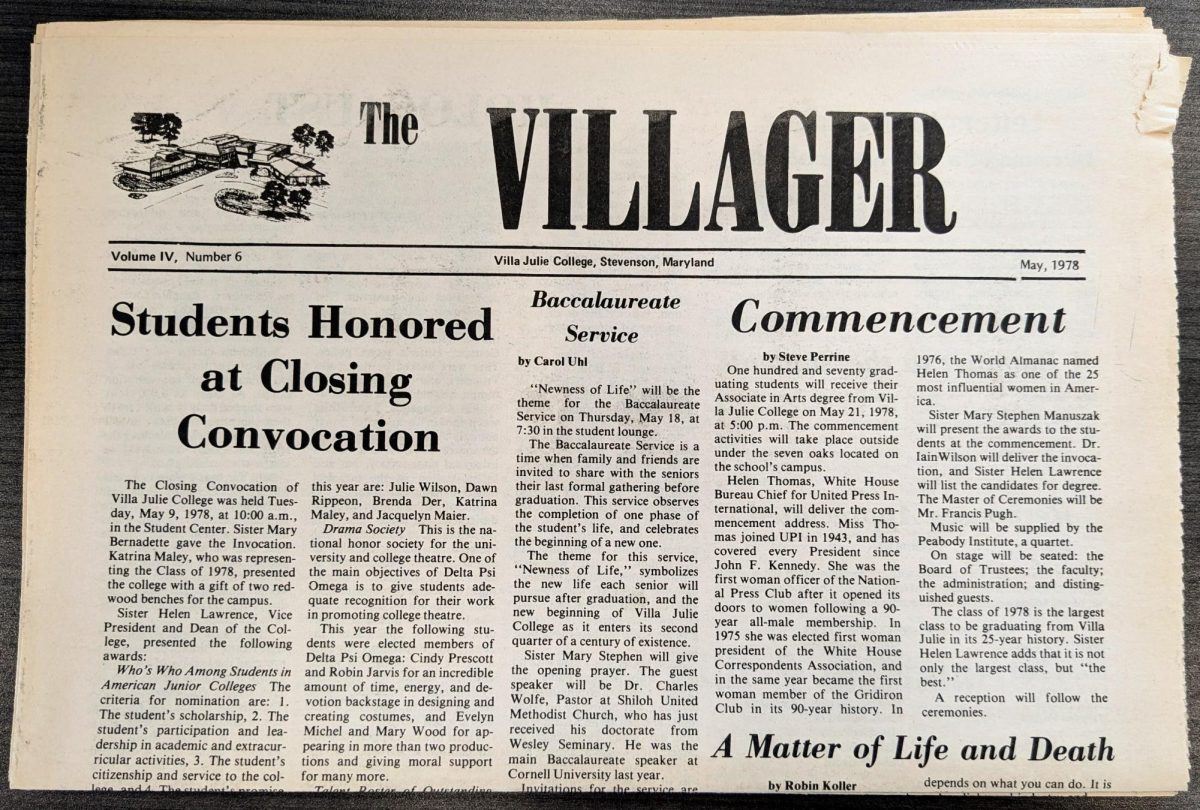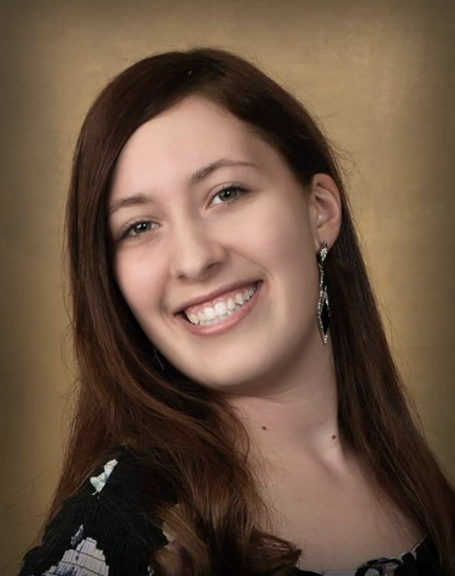I walked into the pristine confines of the Zaffere Library last week for a date with history.
Tucked in the northeast corner of the new library is the Archives Room, and waiting for me was my date — a series of cardboard boxes with exactly 51 years of Villager newspapers, right down to this very day: October 17. Yep, actual print newspapers, not the online-only edition of the Villager you’re currently reading.
I found my way to the archives and started digging. Here’s what I found.
Founded in 1947 as Villa Julie College, the institution has seen countless transformations since.
It began as a two-year junior college for women that specialized in medical-secretarial education. Because of a rapid increase in interest, Villa Julie expanded over the following decades to include new areas of study, four-year degree programs, laboratory buildings, student centers and student housing, all to support its growing population of students. It wasn’t until the early 2000s that Villa Julie came to Owings Mills, Maryland with a collection of residence halls named after historic Baltimore County sites, a new dining hall and a sports and wellness center. Sound familiar?
When it comes to the true depth of Stevenson’s history, the archives prove to be an invaluable resource. The temperature-controlled archives room is currently located at the back of the Philip A. Zaffere Library on the Owings Mills North campus. While not all documents have been migrated from the Greenspring campus, so much history is still nestled in boxes, like treasure troves of knowledge waiting to be rediscovered by anyone that takes an interest. From newspaper articles to yearbooks, these items serve as windows into a past that many have either forgotten or simply not lived to see.
One of the things that Stevenson University today prides itself on is its small, yet close-knit and friendly population. According to a 1976 newspaper article from The Villager’s past reporter Cindy Moll, this isn’t a new feature. She interviewed several freshmen at the time asking what it was that drew them to the institution, and it seems that their answers still ring true to this day.
“A smaller, more personal school seemed to be the answer,” Medical-Secretarial student Kim Phillips said. “The thought of being known as a number was not appealing. At VJC, my instructors already know my name.”
The earliest student yearbooks that the archives hold date all the way back to 1954, exactly 70 years ago. Still reflecting Villa Julie’s prioritization and value of its students, each was highlighted on their own page along with a personal description of what they each brought to the institution, a sort of poeticism existing within them.
“Industrious is this fair lass as she strives to develop her skill in the use of the sound scriber,” reads the caption for second-year Madeline Ellen Cole’s photo.
Second-year Marie Winifred Crosby’s page is quick to highlight both her sewing skills as well as her calm demeanor.
“Time to listen, moments to share…an effortless pace that never seems to hurry…ebony tresses…thoughtful friend…possessor of deep thoughts…calm, imperturbable, quietly taking all things in her stride…efficient and conscientious…adept with a needle,” Crosby’s caption read.
When students come to Stevenson University, it is very easy for the newness of the Owings Mills campus to overshadow its humble beginnings, particularly amid a focus on future growth and improvement. This does not—should not—undermine the history that established the school’s reputation as a welcoming and academically driven institution. From the very start, Villa Julie prioritized the success of its students and made sure to see that they thrived, upholding its tradition of acceptance throughout the years. Over 75 years later, those same principles remain the backbone for both the university’s and its students’ success.



























































